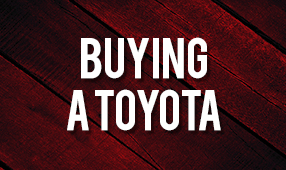Buying a Toyota Forklift Truck
4 Tips to Buying a Toyota Forklift Truck
 If you are planning to invest on a Toyota forklift truck, you should know that you are on the right track. According to consumer and third party reviews, the latest models from this manufacturer perform better than other brands. One of the main reasons behind this is because of the newer releases’ longer lifespan. Furthermore, forklift truck owners, given that they have their equipment undergo routine maintenance, do not have to worry too much about serious issues and damages to the machine.
If you are planning to invest on a Toyota forklift truck, you should know that you are on the right track. According to consumer and third party reviews, the latest models from this manufacturer perform better than other brands. One of the main reasons behind this is because of the newer releases’ longer lifespan. Furthermore, forklift truck owners, given that they have their equipment undergo routine maintenance, do not have to worry too much about serious issues and damages to the machine.
To ensure that you get the most out of your investment on either a new or a used truck, you should take into consideration the factors that have a bearing on the equipment’s lifespan and overall cost, including maintenance and potential repairs.
1. Expected Performance
As with any type of machinery, the overall performance of a Toyota forklift truck will depend on how and where it is used, as well as the amount of care it is given. The kind of application they are used for greatly influences the performance of these pieces of equipment. The steps implemented for their preventative upkeep also play a major role in how smoothly and flawlessly they are going to run. While every part of a forklift truck is important, the following are those that should be a major part of routine checkups:
- Oil Changes
- Belt Tension
- Belt Replacement
- Hydraulic Service
- Brakes
2. Length of Time before Major Repairs are Needed
The overall cost of owning a Toyota forklift truck is also determined by how long it takes before major repairs become necessary. In most cases, the newer models can perform flawlessly for up to five years or anywhere between 10,000 and 20,000 hours of work. Oil changes and other minor preventative upkeep services are often the only maintenance requirements during this time period, which should be implemented for every 200 hours of operation.
It is also worthy to note that while 200 hours is the recommended time frame for oil changes, there are some Toyota forklifts that do not require them until after 500 hours of operation. This is mainly due to the change in oil quality back in July of 2006.
3. Hours of Use
In a nutshell, the newer the newer the equipment is, the more efficient and cost-effective it is. The number of hours it has been used influences the costs associated with its operation. For instance, within the first 10,000 hours of its use, it is said that the operating costs can go up to just around 75 cents/hour. This excludes fuel, operator wages, accidental damage, and capitalization. Within the next 10,000 hours, the costs can go up to $1.25/hour. From 20,000 to 30,000 hours of use, the costs can rise up to $1.75/hour, since the equipment may already require bigger repairs and more expensive maintenance.
4. Weight of Load
Capacity is another important consideration you need to make when shopping around for a Toyota forklift truck. This has something to do with the items or materials you are going to move on a regular or frequent basis. Most forklifts, regardless of brand, make use of a weight-rating based on a 24-inch load center. Say for instance, a lift that has a 4,000 pound-rating means that the lift, which has a 4,000-pound maximum should be 24 inches or less from the face of the forks. This is because the lifting capacity of forklift trucks decreases when the forks are raised while placing items or materials on higher ground. Going beyond this rating increases the potential of the lift to tip, which can result not only in unnecessary damages, but health hazards as well.
Conclusion
A Toyota forklift truck is a good investment, bet it used or new, as long as you are able to take into careful consideration the above-mentioned factors. In addition, you should also keep in mind that it is almost always better to purchase a new one, but there are also certain benefits to getting used equipment.
